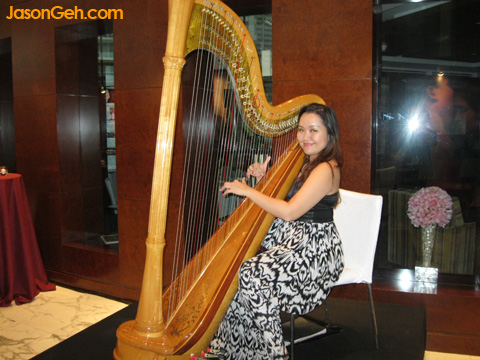
Howard Rye Copyright 1992 & 2007 Document Records.U nder a cold, moonlit sky in south London’s Horniman Museum conservatory, Nala Sinephro is cradling her pedal harp like a child softly resting on her shoulder. His anonymous appearance on Bay Rum Blues is therefore to be cherished, but the equally anonymous spoons player on Buttermilk Blues certainly carries his business on. Finally, a curious footnote: the bones player was a ubiquitous symbol of minstrelsy but by the era of “Race” records was a rare and distinctly old-fashioned being. Smith & Harper – no one seems to know which is which – end this varied survey by carrying it into the field of more conventional sounding blues duets. No doubt it is his choice of repertoire – Mammy’s Little Rolling Stone and Shine On Virginia Moon – which has led jazz discographers to speculate that he belongs to country music. According to the OKeh files, the vocalist on these is one Bob Brown, who also made two unissued titles at the same session. Blues Birdhead ( James Simon) was also familiar with contemporary jazz and with the Bubbling Over Five recorded what most have regarded as a jazz performance. Its most extensively recorded exponent, Robert Cooksey, is heard playing second harp on El Watson‘s Fox Chase. The harmonica was not widely used in instrumental jazz in the vintage era.

Technique is now at the service of content. Lewis merges harp and voice into inspired improvisations of soaring rhythmic and emotional power.

Richard Sowell applies the basic techniques to the ballad tradition to good effect, but Ellis Williams, and especially Alfred Lewis, demonstrate a more developed sensibility. He packs a considerable rhythmic and expressive punch, even managing a hot waltz – but he apparently also recorded at his first session with the white Johnson Brothers and one of them can be heard chugging along on guitar behind Pot Licker Blues. El Watson‘s blues credentials are aurally not in doubt. His Frisco Leaving Birmingham and El Watson‘s Narrow Gauge Blues move a further stage towards personal expression. White said that, “He was the best”, but he was an incurable alcoholic addicted to crude alcohol and going down fast. (Bukka) White around Glendora and West Point, Mississippi, in the late twenties. George ∻ullet Williams, who came from Alabama, worked with Booker T. The consensus has been that this is an African-American performer but the jury is still out and with only two train imitations to go on is quite likely to stay out permanently unless biographical data comes to light. This is conclusive evidence only that the company thought the record would sell better in that market than the “Race” market, but that in itself is suggestive. Palmer McAbee‘s coupling is labelled “hillbilly” on Victor’s session sheet. Imitative pieces were popular in old-time music also and there was some overlap in styles.

The one country harp player well-known when critical standards were being formed, Sonny Terry, played and recorded a good many such pieces. The harmonica lends itself to mimicry, to the playing of “party pieces” in imitation of the sounds of the countryside, agriculture and machinery. Their forbears have not, partly no doubt because of the very small recorded legacy of players such as those represented here. The great figures of city and down-home blues-harp playing from Sonny Boy Williamson onwards are household names to blues enthusiasts and their work, lives, and inter-relationships have been extensively studied.

Genres: Blues, Country Blues, Blues Harmonica, Jazz, Harmonica SoloĪbridged from this albums original booklet notes. Blues Birdhead (James Simons), harmonica solo accompanied by unknown, piano. The Bubbling-Over Five: Blues Birdhead, harmonica unknown, soprano sax unknown, violin unknown, piano unknown banjo / guitar Bob Brown, vocal. George ∻ullet Williams, harmonica solo / speech unknown (possibly Wiley Barner), vocal on 12 unknown, speech on 15. El Watson, harmonica solo / speech on 6 accompanied by Robert Cooksey, harmonica on 6 / speech on 6 unknown, bones on 7 Watson or Cooksey, vocal effects on 6. El Watson, harmonica solo accompanied by Charles Johnson, guitar on 4. William Francis, guitar Richard Sowell harmonica. The Great Harp Players Complete Recorded Works (1927 – 1936)


 0 kommentar(er)
0 kommentar(er)
